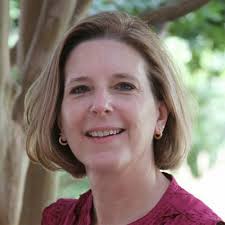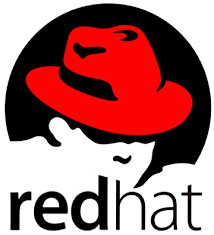Today, the Open Source Initiative (OSI) has become the new home for the former Opensource.com community. Writers and editors formerly contributing to Opensource.com are being invited to continue their work under the OSI umbrella, posting content at a domain owned by the OSI: OpenSource.net. The Opensource.com project had become a community favorite for news, information, opinion and how-tos surrounding the key issues in Open Source software, publishing over 10,000 articles. Over the course of 12 years, Open Source contributors advocated for the creation, adoption and sharing of all things Open Source. As a 501(c)(3) organization and the steward of the Open Source Definition, OSI will oversee OpenSource.net as a not-for-profit, technology-neutral resource for the Open Source community to share knowledge, perspectives and advocacy in support of a healthy Open Source ecosystem.
open source software
See the following -
Opensource.com Community Finds New Life With the Open Source Initiative
OpenSpecimen Streamlines Management of Biospecimen Data
 OpenSpecimen is an open source biobanking informatics platform that permits users to enter and retrieve data concerning the collection, storage, quality assurance, and distribution of biospecimens. Its most important feature is the ability to collect high-quality, standards-based data specific to a disease or set of study requirements. OpenSpecimen, previously known as caTissue, was initially developed with U.S. National Cancer Institute funding under the caBIG program. When the caBIG program closed down in 2011, Krishagni Solutions continued the development and support of caTissue while maintaining the open source nature of the product. In 2014, Krishagni renamed the product to OpenSpecimen to indicate that the product can support any disease (i.e. not just cancer) and any specimen type (i.e. not just tissue)...
OpenSpecimen is an open source biobanking informatics platform that permits users to enter and retrieve data concerning the collection, storage, quality assurance, and distribution of biospecimens. Its most important feature is the ability to collect high-quality, standards-based data specific to a disease or set of study requirements. OpenSpecimen, previously known as caTissue, was initially developed with U.S. National Cancer Institute funding under the caBIG program. When the caBIG program closed down in 2011, Krishagni Solutions continued the development and support of caTissue while maintaining the open source nature of the product. In 2014, Krishagni renamed the product to OpenSpecimen to indicate that the product can support any disease (i.e. not just cancer) and any specimen type (i.e. not just tissue)...
- Login to post comments
OSEHRA 2017: Microsoft, OpenStack, IBM Support VistA in the Cloud
 This year’s OSEHRA 2017 Open Source Summit proved to be another major milestone in the transition from locked-in vendor-controlled health information technology to an open solutions approach. One of the major news stories at the summit was the decision by Microsoft to join OSEHRA and collaborate with the Open Health community. Another major presentation was that of Martin Rice, Director of the Division of State System for the Centers for Medicare and Medicaid Services (CMS) and Clyneice Chaney, Principal Systems Engineer. In their presentation (video* and PowerPoint*), Rice and Chaney described how CMS is transitioning to an open/modular approach to State Medicaid IT systems.
This year’s OSEHRA 2017 Open Source Summit proved to be another major milestone in the transition from locked-in vendor-controlled health information technology to an open solutions approach. One of the major news stories at the summit was the decision by Microsoft to join OSEHRA and collaborate with the Open Health community. Another major presentation was that of Martin Rice, Director of the Division of State System for the Centers for Medicare and Medicaid Services (CMS) and Clyneice Chaney, Principal Systems Engineer. In their presentation (video* and PowerPoint*), Rice and Chaney described how CMS is transitioning to an open/modular approach to State Medicaid IT systems.
- Login to post comments
OSEHRA 2017: Open Source Becomes Mainstream in the Healthcare Industry
 One of the most exciting things about the OSEHRA 2017 Open Source Summit was to see so many leading edge open source health IT solutions, and to hear reports of the major strides they are making around the world. Our very own Editor-in-Chief, Roger A. Maduro gave a presentation on the state of open health IT. The room was absolutely packed, with standing room only. Maduro started his presentation by pointing out that during the recent HIMSS17 conference in Orlando, Florida, more than half of of the 300 sessions of the conference were based on open source solutions such as FHIR, Blockchain, Interoperability and the open/modular IT strategy being followed by Medicaid.
One of the most exciting things about the OSEHRA 2017 Open Source Summit was to see so many leading edge open source health IT solutions, and to hear reports of the major strides they are making around the world. Our very own Editor-in-Chief, Roger A. Maduro gave a presentation on the state of open health IT. The room was absolutely packed, with standing room only. Maduro started his presentation by pointing out that during the recent HIMSS17 conference in Orlando, Florida, more than half of of the 300 sessions of the conference were based on open source solutions such as FHIR, Blockchain, Interoperability and the open/modular IT strategy being followed by Medicaid.
- Login to post comments
OSEHRA 2019 Summit Dates Announced
 Open Source Electronic Health Record Alliance (OSEHRA) is pleased to announce its 8th Annual Open Source Summit: Open SaaS - Open Source in the Cloud from Tuesday, July 9 through Wednesday, July 10, 2019 at the Bethesda North Marriott Hotel and Conference Center, just north of Washington, D.C. This year's two-day Summit will showcase leading-edge, open source initiatives and highlight the increasing level of public-private partnership in major programs and agencies. Open source software has become key to both implementation and interoperability as more and more programs opt for cloud-based solutions and software-as-a-service delivery models. This Summit will address ways to optimize open source utilization and community involvement in this new playing field.
Open Source Electronic Health Record Alliance (OSEHRA) is pleased to announce its 8th Annual Open Source Summit: Open SaaS - Open Source in the Cloud from Tuesday, July 9 through Wednesday, July 10, 2019 at the Bethesda North Marriott Hotel and Conference Center, just north of Washington, D.C. This year's two-day Summit will showcase leading-edge, open source initiatives and highlight the increasing level of public-private partnership in major programs and agencies. Open source software has become key to both implementation and interoperability as more and more programs opt for cloud-based solutions and software-as-a-service delivery models. This Summit will address ways to optimize open source utilization and community involvement in this new playing field.
- Login to post comments
OSEHRA Debuts 2015 Innovation Webinar Series
OSEHRA is excited to announce confirmed speakers for the Innovation Webinar Series, an engaging and free online event hosted monthly by OSEHRA, its members, and those on the forefront of open source. Read More »
- Login to post comments
OSEHRA To Hold Innovation Webinar on Open Source Clinical Quality Tools
 OSEHRA is going to be holding a special one-hour Innovation Webinar tomorrow as part of the National Health IT Week. The focus will be on open source applications and tools that are gaining traction for clinical quality measures. Well known and very mature is popHealth. The webinar participants will discuss the latest upgrades in version 5.0 of the software. They will also present a new entrant into the field. That would be the Cedar project, an open source tool for testing the strength of Electronic Clinical Quality Measure (eCQM) collection systems that receive Quality Reporting Document Architecture (QRDA) files.
OSEHRA is going to be holding a special one-hour Innovation Webinar tomorrow as part of the National Health IT Week. The focus will be on open source applications and tools that are gaining traction for clinical quality measures. Well known and very mature is popHealth. The webinar participants will discuss the latest upgrades in version 5.0 of the software. They will also present a new entrant into the field. That would be the Cedar project, an open source tool for testing the strength of Electronic Clinical Quality Measure (eCQM) collection systems that receive Quality Reporting Document Architecture (QRDA) files.
- The Future Is Open
- Login to post comments
OSI Approves Cryptographic Autonomy License and CERN Open Hardware Licenses
 As the steward of the Open Source Defintion, the Open Source Initiative has been designating licenses as "open source" for over 20 years. These licenses are the foundation of the open source software ecosystem, ensuring that everyone can use, improve, and share software. When a license is approved, it is because the OSI believes that the license fosters collaboration and sharing for the benefit of everyone who participates in the ecosystem. The world has changed over the past 20 years, with software now used in new and even unimaginable ways. The OSI has seen that the familiar open source licenses are not always well-suited for these new situations. But license stewards have stepped up, submitting several new licenses for more expansive uses. The OSI was challenged to evaluate whether these new concepts in licensing would continue to advance sharing and collaboration and merit being referred to as "open source" licenses, ultimately approving some new special purpose licenses.
As the steward of the Open Source Defintion, the Open Source Initiative has been designating licenses as "open source" for over 20 years. These licenses are the foundation of the open source software ecosystem, ensuring that everyone can use, improve, and share software. When a license is approved, it is because the OSI believes that the license fosters collaboration and sharing for the benefit of everyone who participates in the ecosystem. The world has changed over the past 20 years, with software now used in new and even unimaginable ways. The OSI has seen that the familiar open source licenses are not always well-suited for these new situations. But license stewards have stepped up, submitting several new licenses for more expansive uses. The OSI was challenged to evaluate whether these new concepts in licensing would continue to advance sharing and collaboration and merit being referred to as "open source" licenses, ultimately approving some new special purpose licenses.
- Login to post comments
Red Hat Closing In On $2 Billion In Its Fourth Quarter
 Red Hat finishes 2015 on a strong financial note, with OpenShift 3.1 positioned as its next-generation cloud application development platform. Red Hat reported its third quarter 2016 results Nov. 30, and largely contrary to expectations, it's still going strong. Advances in cloud computing, VMware's strong virtualization product line, the Cloud Foundry open source development platform, and Amazon and other cloud computing services were all supposed to be sapping Red Hat's strength. On the contrary, as long as Red Hat remains at the core of the enterprise data center with its Red Hat Enterprise Linux operating system, it will remain a viable competitor to VMware, the open source development platform Cloud Foundry, and proprietary clouds. ..
Red Hat finishes 2015 on a strong financial note, with OpenShift 3.1 positioned as its next-generation cloud application development platform. Red Hat reported its third quarter 2016 results Nov. 30, and largely contrary to expectations, it's still going strong. Advances in cloud computing, VMware's strong virtualization product line, the Cloud Foundry open source development platform, and Amazon and other cloud computing services were all supposed to be sapping Red Hat's strength. On the contrary, as long as Red Hat remains at the core of the enterprise data center with its Red Hat Enterprise Linux operating system, it will remain a viable competitor to VMware, the open source development platform Cloud Foundry, and proprietary clouds. ..
SAHMSA Contributes Open Source Code for Omnibus Care Plan to OSEHRA
 The Open Source Electronic Health Record Alliance (OSEHRA), a nonprofit membership organization dedicated to accelerating innovation through open source strategy, is pleased to welcome a major code contribution from the Department of Health and Human Services (HHS) Substance Abuse and Mental Health Service Agency (SAMHSA). The complete Omnibus Care Plan (OCP) Fast Healthcare Interoperability Resources (FHIR) and SMART on FHIR Infrastructure, including the Care Coordination and Consent Management code package, contributed using the Apache License Version 2.0, has been delivered to OSEHRA and is now available for the healthcare community.
The Open Source Electronic Health Record Alliance (OSEHRA), a nonprofit membership organization dedicated to accelerating innovation through open source strategy, is pleased to welcome a major code contribution from the Department of Health and Human Services (HHS) Substance Abuse and Mental Health Service Agency (SAMHSA). The complete Omnibus Care Plan (OCP) Fast Healthcare Interoperability Resources (FHIR) and SMART on FHIR Infrastructure, including the Care Coordination and Consent Management code package, contributed using the Apache License Version 2.0, has been delivered to OSEHRA and is now available for the healthcare community.
- Login to post comments
Scientists Launch Open Source Computational Platform to Study Biological Processes
 Agent-based simulations (ABS) are powerful computational tools that help scientists understand complex biological systems. These simulations are an inexpensive and efficient way to quickly test hypotheses about the physiology of cellular tissues, organs, or entire organisms. However, many ABS do not take full advantage of available computational power, and the majority of ABS platforms on the market are designed with a particular use case in mind.
Agent-based simulations (ABS) are powerful computational tools that help scientists understand complex biological systems. These simulations are an inexpensive and efficient way to quickly test hypotheses about the physiology of cellular tissues, organs, or entire organisms. However, many ABS do not take full advantage of available computational power, and the majority of ABS platforms on the market are designed with a particular use case in mind.
- Login to post comments
Setting A Standard For Digital Public Goods
 In June 2020, the Secretary-General of the United Nations published a "Roadmap for Digtal Cooperation." In this report, he expanded on recommendations made a year before, calling on all actors, including the Member States, the United Nations system, the private sector, and others, to promote digital public goods. He says to realize the benefits of increased internet connectivity, open source projects in the form of digital public goods must be at the center. While the term "digital public good" appears as early as April 2017, this report offers the first broadly accepted definition of digital public goods...The Digital Public Goods Alliance (DGPA) translated that definition into a nine-indicator open standard that we hope will serve as a comprehensive, shared definition to promote the discovery, development, use of, and investment in digital public goods for a more equitable world.
In June 2020, the Secretary-General of the United Nations published a "Roadmap for Digtal Cooperation." In this report, he expanded on recommendations made a year before, calling on all actors, including the Member States, the United Nations system, the private sector, and others, to promote digital public goods. He says to realize the benefits of increased internet connectivity, open source projects in the form of digital public goods must be at the center. While the term "digital public good" appears as early as April 2017, this report offers the first broadly accepted definition of digital public goods...The Digital Public Goods Alliance (DGPA) translated that definition into a nine-indicator open standard that we hope will serve as a comprehensive, shared definition to promote the discovery, development, use of, and investment in digital public goods for a more equitable world.
- Login to post comments
The (Awesome) Economics of Open Source
 Successful open source software companies "discover" markets where transaction costs far outweigh all other costs, outcompete the proprietary alternatives for all the good reasons that even the economic nay-sayers already concede (e.g., open source is simply a better development model to create and maintain higher-quality, more rapidly innovative software than the finite limits of proprietary software), and then-and this is the important bit-help clients achieve strategic objectives using open source as a platform for their own innovation. With open source, better/faster/cheaper by itself is available for the low, low price of zero dollars. As an open source company, we don't cry about that. Instead, we look at how open source might create a new inflection point that fundamentally changes the economics of existing markets or how it might create entirely new and more valuable markets.
Successful open source software companies "discover" markets where transaction costs far outweigh all other costs, outcompete the proprietary alternatives for all the good reasons that even the economic nay-sayers already concede (e.g., open source is simply a better development model to create and maintain higher-quality, more rapidly innovative software than the finite limits of proprietary software), and then-and this is the important bit-help clients achieve strategic objectives using open source as a platform for their own innovation. With open source, better/faster/cheaper by itself is available for the low, low price of zero dollars. As an open source company, we don't cry about that. Instead, we look at how open source might create a new inflection point that fundamentally changes the economics of existing markets or how it might create entirely new and more valuable markets.
- Login to post comments
The Current State of Blockchain and Where it's Going
 In an earlier post, Blockchain evolution: A quick guide and why open source is at the heart of it, I discussed the first generations of blockchains: the public Bitcoin and cryptocurrency blockchains, followed by the Ethereum blockchain capable of executing programs ("smart contracts"), leading to permissioned versions of code-executing blockchains (e.g., Hyperledger Fabric, Quorum). Let's step back into the blockchain jungle and take a look at the current state of the ecosystem and the projects trying to solve some of the limitations of blockchain technology: speed and throughput, cross-blockchain information and value exchange, governance, and identity and account management.
In an earlier post, Blockchain evolution: A quick guide and why open source is at the heart of it, I discussed the first generations of blockchains: the public Bitcoin and cryptocurrency blockchains, followed by the Ethereum blockchain capable of executing programs ("smart contracts"), leading to permissioned versions of code-executing blockchains (e.g., Hyperledger Fabric, Quorum). Let's step back into the blockchain jungle and take a look at the current state of the ecosystem and the projects trying to solve some of the limitations of blockchain technology: speed and throughput, cross-blockchain information and value exchange, governance, and identity and account management.
- Login to post comments
The Cyber Resilience Act Introduces Uncertainty And Risk Leaving Open Source Projects
 What might happen if the uncertainty persists around who is held responsible under the Cyber Resilience Act (CRA)? The global Open Source community is averse to legal risks and generally lacks access to counsel, so it’s very possible offers of source code will simply be withdrawn rather than seeking to resolve the uncertainty. The CRA rightly addresses the need for commercial suppliers to protect their customers from exploits and cyber attacks. But legislators have exposed the open development of software itself to the regulations rather than just the for-profit use of Open Source artifacts in the marketplace. They are incorrectly assuming that Dirk Riehle’s terminology calling single-company projects “commercial Open Source” means it’s possible to use the “commerciality” of an application to distinguish single-company activity from community projects, and by using the concepts of proprietary software to then define boundaries.
What might happen if the uncertainty persists around who is held responsible under the Cyber Resilience Act (CRA)? The global Open Source community is averse to legal risks and generally lacks access to counsel, so it’s very possible offers of source code will simply be withdrawn rather than seeking to resolve the uncertainty. The CRA rightly addresses the need for commercial suppliers to protect their customers from exploits and cyber attacks. But legislators have exposed the open development of software itself to the regulations rather than just the for-profit use of Open Source artifacts in the marketplace. They are incorrectly assuming that Dirk Riehle’s terminology calling single-company projects “commercial Open Source” means it’s possible to use the “commerciality” of an application to distinguish single-company activity from community projects, and by using the concepts of proprietary software to then define boundaries.
- Login to post comments